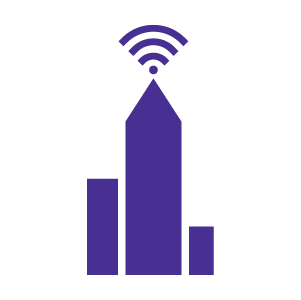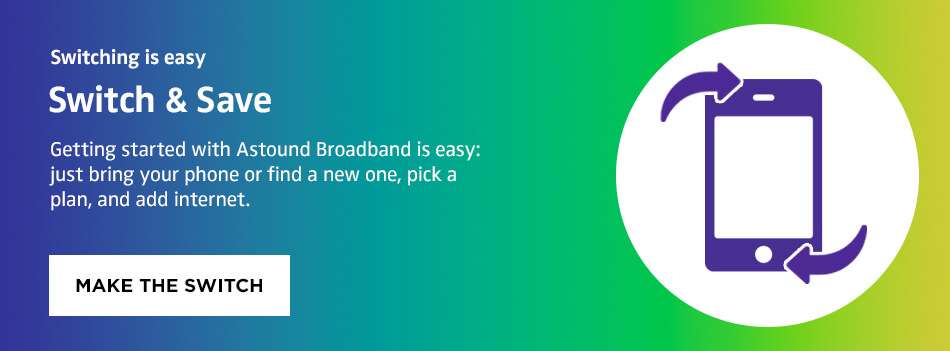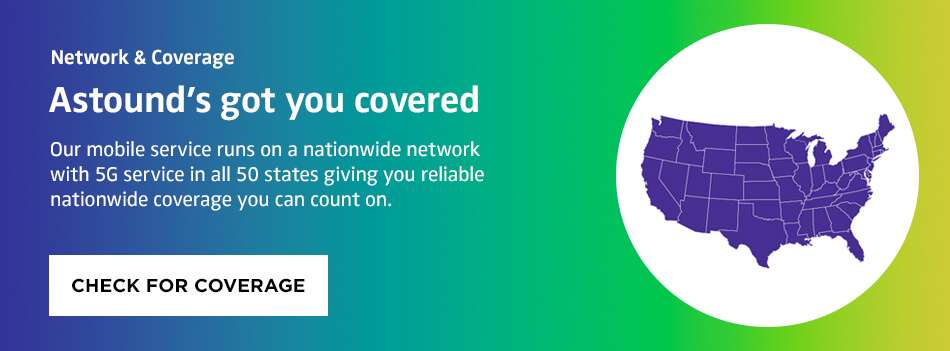What is LTE data?

Have you ever looked at those three little letters in the corner of your mobile device and wondered what is LTE?
Or perhaps you’ve heard this term thrown around when people talk about 4G and 5G networks and asked what is LTE data? This article will explain what LTE is and how it differs from other networks.
What you'll learn:
What is LTE?
LTE is an acronym for Long Term Evolution and is a mobile communication standard used for 4G networks.
It represents the technological improvements of cellular networks, mobile devices, and software technologies that allow your mobile devices to connect to the internet when you’re not connecting to WiFi.
LTE is also known as the path toward accessing higher data speeds, so your mobile device and apps can operate faster and remain connected to evolving and better networks.
Timeline
In the early 2000s, as the popularity of mobile devices expanded with improved battery life and more efficient software, cellular network carriers and internet service providers were focused on creating and optimizing services for voice and high-speed data usage.
Major network carriers were still in the process of building and rolling out cellular networks for wireless communications.
By the mid-2000s, it was clear existing networks wouldn’t be able to support the future demand for mobile voice and data services, including fast internet access. Networks needed to improve and upgrade to leverage the latest advancements in technology.
In 2008, the 3rd Generation Partnership Project (3GPP) defined LTE standards. 3GPP is an organization focusing on protocol developments for mobile communications in North America (Canada, US, Mexico), Asia, and Europe.
LTE is considered the upgrade path for technological advances between the generational evolution of mobile communication networks now known as 3G and 4G. The “G” represents a generation.
How does LTE work?
LTE was designed to provide faster internet speeds, better quality voice calls, and enable more efficient data transfers on mobile devices. It uses radio waves to transmit data between a device and a cellular network, using internal antennas on your mobile devices.
Technological advances
OFDMA
To support more data users, LTE networks use a technique called OFDMA (Orthogonal Frequency Division Multiple Access). LTE divides the available radio frequencies into multiple smaller subcarriers, allowing multiple devices to access a network at the same time, improving network bandwidth.
MIMO
For data speed increases, LTE uses advanced signal processing techniques, such as MIMO (Multiple Input Multiple Output), which improves the quality and reliability of data transmission.
MIMO uses multiple antennas on both the device and the network to send and receive multiple data streams simultaneously, boosting minimum data speeds between 3G and 4G.
Packet switching
LTE networks also use a packet-switched architecture for data transmission, which means that data is delivered in small packets versus a continuous stream.
This allows the network to prioritize and optimize data transmission based on the type of data flow and network conditions, providing better quality of service.
IP
To maintain ongoing access to a full range of internet services and applications on smartphones, LTE networks support the use of advanced Internet Protocols (IP) so all your devices can communicate with your internet services.
Access to 4G LTE networks will give you a better mobile experience when you stream video, play games, or use social media and map apps by allowing more efficient data transfers.

Goals of LTE
LTE aimed to achieve the following standards from 3G to 4G:
-
- Increase peak data speeds.
- Create a new standard radio interface for multiple types of data.
- Improve network bandwidth to support more data users.
- Support an all-internet protocol (IP) address network for a wide range of internet services.
Improvements
4G is considered a significant improvement over 3G networks for faster data transfer, reliability and capacity. Technically LTE and 4G are not the same, but LTE became synonymous with 4G as carriers promoted the use of 4G networks and they’re often linked together.
So when you see 4G LTE on your phone, it means you’re connecting to a 4G network and you’ll receive the following benefits:
-
- Faster internet speeds: LTE provides much faster internet speeds than previous 3G networks, allowing you to browse the web, stream video and download content more quickly.
- Improved network reliability: LTE has better network reliability and coverage compared to previous 3G networks, which means fewer dropped calls and a more consistent internet connection.
- Lower latency: LTE has reduced latency, which is the time it takes for data to travel between your devices and the provider’s network servers, giving you a more responsive internet experience. If you like to FaceTime, stream video, or play games on your phone, you’ll receive a higher quality of service.

Is LTE the same as 5g?
LTE and 5G are not the same. 5G is the fifth-generation and most advanced wireless network communication technology available. 5G vs. 4G allows faster download and upload speeds, lower latency, greater capacity, and improved reliability over LTE.
5G uses a combination of new and existing technologies to create significantly faster data transfer rates for a better mobile experience.
LTE networks typically operate on frequencies between 700 MHz and 2600 MHz. 5G operates on higher frequency bands, including millimeter waves (mmWave).
This is a high-frequency spectrum that allows for extremely fast data transfer rates, but it has a limited range.
However, 5G networks provide small cells, which are low-power, short-range base stations deployed in dense urban areas for additional coverage and capacity overcoming limited range.

5G also leverages massive MIMO technology that uses multiple antennas to transmit and receive signals, allowing spectrum efficiency, which can improve coverage and capacity by 10 times more than 4G LTE networks.
Other 5G technology techniques include:
Beamforming
Beamforming uses directional antennas to focus radio signals in a specific direction, improving signal strength and reducing interference.
Network slicing
Network slicing allows operators to create virtual networks with different characteristics, such as higher reliability or lower latency, to meet the needs of different applications and users for expanded services.
5G technology offers a significant leap forward in network speeds, capacity, and connectivity, which is enabling an expanded range of new applications and services for smart cities, autonomous vehicles, and virtual and augmented reality.
While LTE will continue to support the growth and use of mobile communications for 4G, older networks will eventually sunset and be phased out.
To connect to a 4G LTE or 5G network, a mobile device upgrade is required to harness all the improved technology.
As technology evolves, understanding LTE can help you make informed decisions about investing in new mobile devices and choosing the right service plan for you and your family to access the fastest data speeds and expanded data services.
Save with Mobile & Internet Together
Get the mobile service, home internet & streaming that’s just right for you.
Astound Mobile requires Astound Internet service. Coverage not available in all areas. A trademark of Ziff Davis, LLC. Used under license. Reprinted with permission. Where available. © 2024 Ziff Davis, LLC. All Rights Reserved. All names, logos, images and service marks are property of their respective owners. ©2024 Astound Broadband. All rights reserved.
This website contains instructional information, including from third-party sources, and is intended, but cannot be guaranteed, to be always up-to-date, complete and accurate. Astound does not endorse, and is not responsible for, any third-party content that may be accessed through this website. Any representation or warranty by Astound that might be otherwise implied by information on this website is expressly disclaimed. Astound expressly disclaims all liability or responsibility with respect to actions taken or not taken based on any or all of the instructional information contained on this website. Astound does not warrant or guarantee the availability of any services at any specific time or geographic location or that services will be provided without interruption. Not all aspects of the Astound services function on all equipment and devices. Use of this website is subject to the Web Site Disclaimer and Web Content Accessibility Policy.























